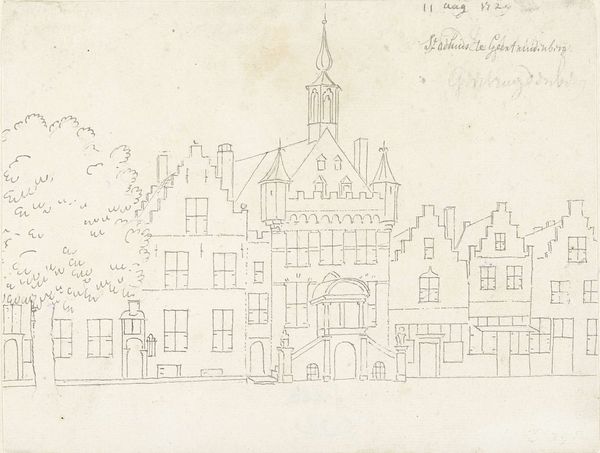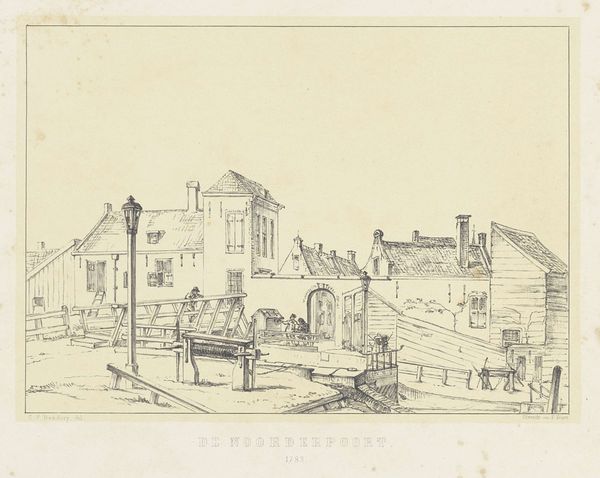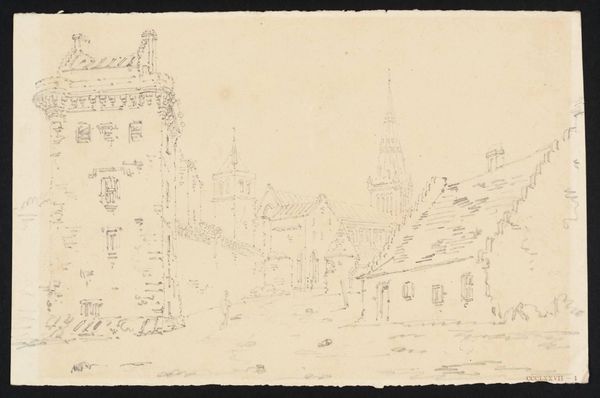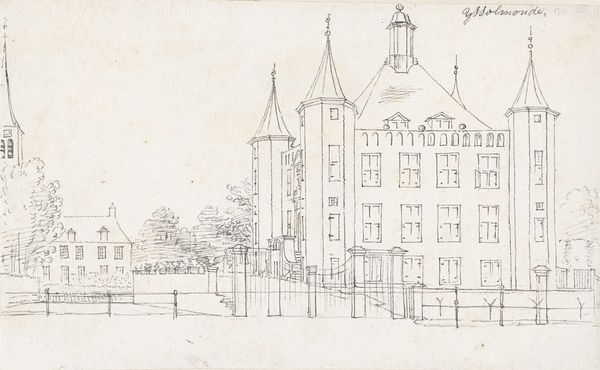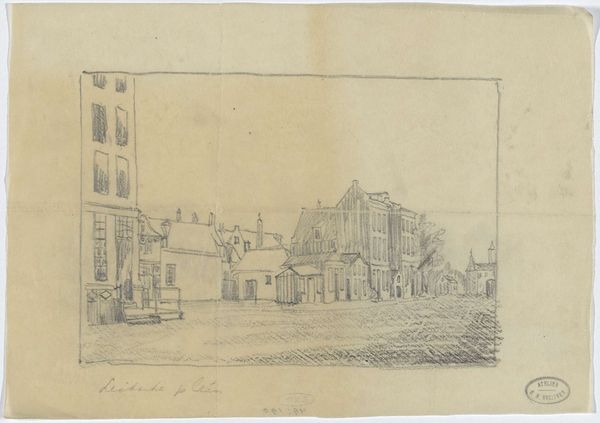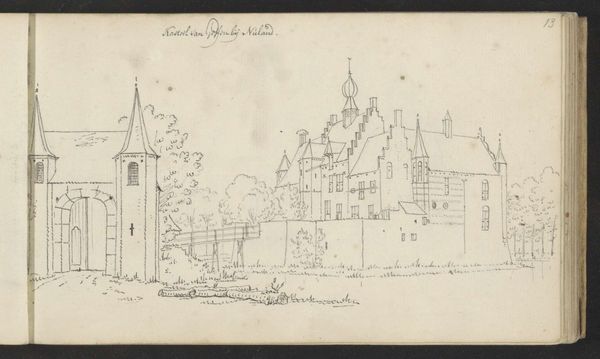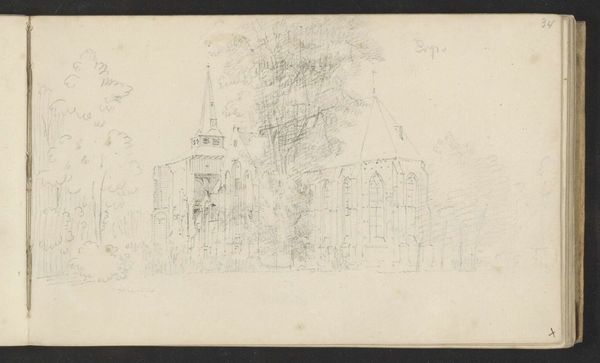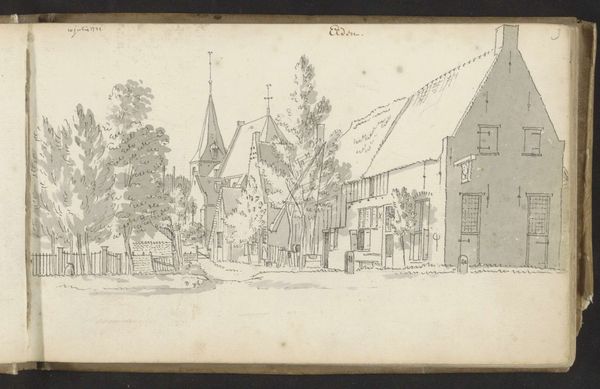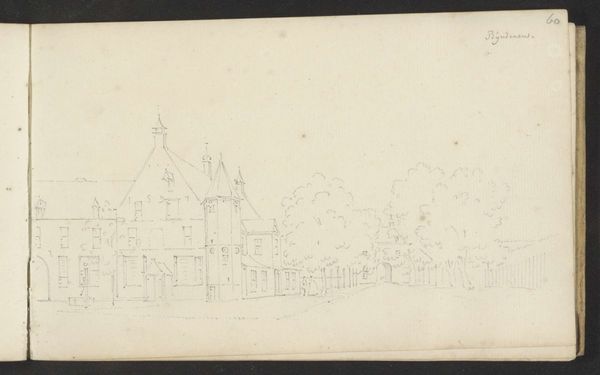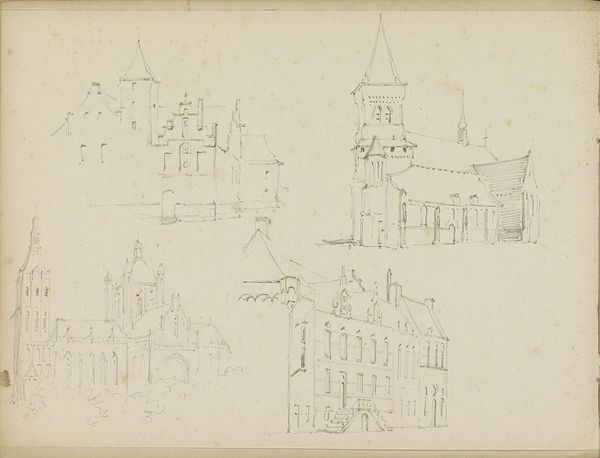
drawing, pencil
#
drawing
#
romanticism
#
pencil
#
cityscape
Dimensions: 127 mm (height) x 207 mm (width) (billedmaal)
Curator: The artwork before us, titled "Parti fra Kgs. Nytorv," by Martinus Rørbye, offers a glimpse into Copenhagen's Kgs. Nytorv square between 1841 and 1847. It’s rendered with pencil in a sketchbook style, a fleeting capture of a moment. Editor: My first impression is its simplicity. The bare pencil lines feel almost journalistic in their immediacy. But there is also an underlying romanticism that tempers this initial sense of the factual and austere. Curator: Absolutely. Rørbye, aligned with the Romantic movement, was preoccupied with portraying atmosphere. One way to achieve this in sketches like this was through the repetitive marks indicating textures. But look closer—consider the social dimensions embedded in this depiction. What class of people is depicted? How do we read their function and role within the community as expressed within the architectural setting? Editor: Right, it prompts reflection on the socio-economic strata within the city. Rørbye hasn't romanticized the commoners that inhabit the landscape, who are placed in relationship with these markers of affluence; we see their relationship to labour by noting where they stand, in front of which buildings, etc. It’s rendered as an image reflective of status. It makes me wonder about accessibility, class disparities. It almost reveals as much by what it omits. The drawing itself, pencil on paper, implies a directness—the hand of the artist capturing the raw essence of the scene, as well as being materially inexpensive to produce, meaning that is also exists as reproducible object for educational or research. Curator: Exactly, but is that simplicity hiding more complex craftsmanship? We see clear variation in pencil strokes, from delicate hatches rendering the façades to bolder outlines defining the figures. Editor: That tension between what appears simple versus the actual craft feels very central. We see a narrative being built of this site with pencil. A document of sorts that encourages further questions of not just how Copenhagen looked in the 1840's but how function worked for those that lived here, where wealth flowed and who benefitted from access to these important infrastructures, markets and buildings. How this narrative functions is, of course, only delivered through the tools that he has applied. Curator: True. This examination brings us closer to understanding the multifaceted dialogue within this work—the artist's skill meeting social commentary. Editor: Ultimately, what’s so potent is how a simple city view becomes a potent reminder that art’s truth often rests in unveiling histories.
Comments
No comments
Be the first to comment and join the conversation on the ultimate creative platform.

